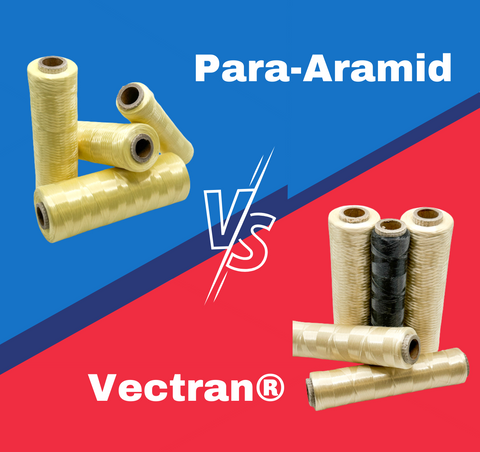Fiber Glossary Terms
Abrasion Resistance: The ability of a fiber or fiber product to withstand surface wear from rubbing against another material or itself.
Breaking Tenacity: The maximum stress that a material can endure under tension, often measured at the point of rupture.
Conductivity: The ability of a material to conduct electricity. Some textiles are specially treated to increase their conductivity.
Cord: A thin rope made by twisting or braiding multiple yarns together.
Creep: The tendency of a material to deform permanently over time under the influence of mechanical stress.
Cryogenic Temperatures: Extremely low temperatures, typically below -150°C. Certain fibers and textiles are designed to withstand such extreme conditions without losing their physical properties.
Denier: A unit of measurement for the linear mass density of fibers, defined as the mass in grams per 9,000 meters of the fiber.
Denier per Filament (DPF): A measure of the thickness of each filament in a yarn, calculated by dividing the total denier of the yarn by the number of filaments.
Density: The mass of a material per unit volume.
Dtex (Decitex): A unit of measurement for the linear mass density of fibers, representing the weight in grams per 10,000 meters of the yarn.
Elongation: The amount a material can be stretched or lengthened from its original length, often expressed as a percentage.
Elongation at Break: The maximum strain that a material can withstand under tension or stress before breaking.
Fiber Braiding: The process of interlacing three or more yarns or fiber strands in a diagonal pattern to create a dense and textured surface.
Fiber Coating: The process of applying a layer of different material to the surface of a fiber to enhance its properties, such as durability or strength. Coatings are either water-based, solvent based, or 100% solids such as a wax coating. The polymer resins are applied to the fiber substrate and cured via thermal or UV, leaving a polymeric film on the surface of the fiber.
Fiber Rewinding: The process of winding fiber onto a different spool or bobbin for further processing, storage, or shipping.
Fiber Twisting: The process of twisting fibers together to form a ply or cord. This enhances the yarn's strength, elasticity, and smoothness.
Filament: A single, continuous strand of a synthetic or natural fiber.
Filament Count: The number of individual filaments or strands that constitute a yarn or thread.
Hand: A term used in the textile industry to describe the feel, fullness, softness, firmness, or drape of a fabric when it is touched.
Modulus: A measure of a material's resistance to being deformed elastically (i.e., non-permanently) when stress is applied to it.
Monofilament: A type of yarn that consists of a single, continuous filament or fiber.
Moisture Regain: The capacity of a textile fiber to absorb moisture from the air under standard conditions.
Multi-filament: A type of yarn that consists of multiple, individual filaments or fibers.
Picks Per Inch (PPI): The number of interlaces of fibers in a given inch of a braid. This can also be displayed as
Reel: A cylindrical device on which yarn or thread is wound for storage or transport.
Rope: A thick cord made by twisting or braiding multiple strands of yarn together.
S Twist: A type of twist in yarn that resembles the middle part of the letter "S" when viewed from the top. It counteracts the twist applied during weaving and is typically used for that purpose.
Shielding: The use of conductive materials in textiles to reduce the effects of electromagnetic radiation on the body or on electronic devices.
Specific Gravity: The ratio of the density of a substance to the density of a standard reference material, typically water for liquids.
Splices: The points where two ends of textile yarn or thread are joined together during the manufacturing process.
Spool: A device on which yarn or thread is wound for storage or transport. It is often made from plastic or wood.
Strength to Weight Ratio: The ratio of a material's tensile strength to its density. A high ratio indicates a material that is both strong and lightweight.
Spun Yarn: Yarn that is made by twisting staple fibers together to make a cohesive thread, or "single". Several "singles" can be twisted together to make a thicker yarn.
Tensile Strength: The maximum amount of tensile (pulling) stress that a material can endure before failure, i.e., breaking or permanent deformation.
Tex: A unit of measurement for the linear mass density of fibers, defined as the weight in grams per 1,000 meters of the fiber.
Twist Per Inch (TPI): The number of twists in one inch of yarn or thread, a factor that can affect the yarn's strength, smoothness, and other properties.
U-V Resistance: The ability of a material to resist degradation from exposure to ultraviolet (UV) light. UV-resistant fabrics are often used in outdoor applications where they are exposed to sunlight.
Variegated Length Spun Yarn: Yarn made up of staple fibers of varying lengths, which can create a unique texture or appearance in the finished fabric.
Yarn Dyeing: The process of adding color to yarn, either before it is woven into fabric (pre-dyeing) or after it has been woven (post-dyeing).
Yield: The number of linear feet in 1 LB of fiber. It is also commonly expressed as the weight of 1000 ft of a fiber or fiber product.
Z Twist: A type of twist in yarn that resembles the middle part of the letter "Z" when viewed from the top. It helps the yarn to hold together and is typically used for knitting.




